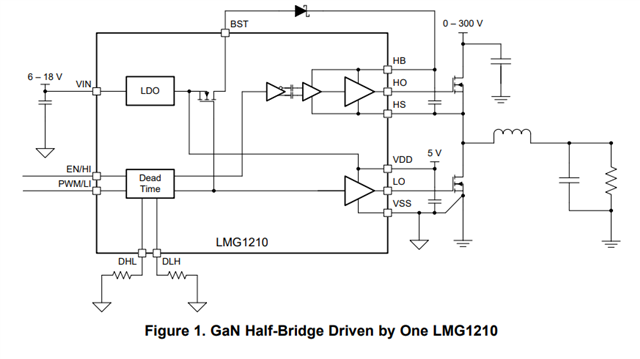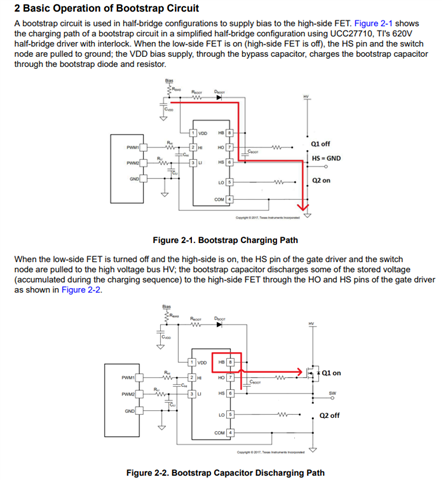Tool/software:
I am utilizing the LMG1210 GaN Driver in IIM configuration with the intent to drive an EPC8002 GaN FET. I have the circuit configured such that there are 3 voltage rails that can be chosen for the GaN Drain or an external signal that is intended to be drained to GND. Essentially, based on the configuration of the populated R00 jumpers, the LMG1210 chip can drive the EPC8002 GaNFET either high-side or low-side. Let me know if you have any further questions about the schematic.
I am having a few issues occuring using the below design:
- On high side application, the GaN FET is always active, regardless of input at HI
- Upon testing, the VDD pin was showing 11.74VDC with reference to power GND.







